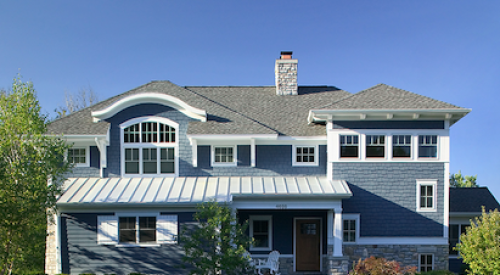If you could offer your home buyers a product that allows them to change their home, but not their address, would you?
 |
"We make it easy to change the house as the occupant's needs change," says Fernando Pagés Ruiz, president of Lincoln, Neb.-based Brighton Construction, which built the concept home.
According to Harvard University's Joint Center for Housing Studies, remodeling expenditures to "modernize or improve the livability" of homes reached $176 billion in 2005, and 45 percent of these projects involve interior changes.
The hallmark of the concept home is its flexible floor plan. The ultimate benefit is that instead of selling the home or paying for a costly remodel, the owners can remain in their home as their needs change over time.
A flexible home: Just think of the marketing edge. A little extra flexibility can ease and speed construction, too.
Flexible Floor PlanPATH borrowed its flexible floor plan building principles from commercial construction.
In the Concept Home, a centrally-located mechanical core keeps most of the HVAC, vent stacks and plumbing in one area, making it easier to access and easier to design around.
 |
The Flex Room, an unfinished space above the garage, gives homeowners the option of adding a rec room, a bedroom or study later on. The front porch is designed for future conversion to a first-floor master bedroom. And all three levels of the floor plan are designed to readily accommodate an elevator if needed.
Flexible ProductsAchieving a flexible design is made easier with innovative products. Here's a snapshot of four products that increase flexibility in the Concept Home.
- Pex piping and plumbing manifold. Pex piping and a Viega Manabloc manifold make plumbing relatively simple in any room. The manifold allows each water line to be shut off individually, making it easier to expand the plumbing to accommodate a full bathroom later on. Flexible piping is installed by snaking it through the home's floor joists.
- Wireless light switches. Lightning Switch's wireless switches allow home owners to move the switch location wherever they want, with no additional wiring.
- Removable baseboard cable channels. Raise your hand if you've ever been hindered putting a television on a wall without an outlet or cable outlet. In the Concept Home, removable baseboard cable channels manufactured by WireTracks make rearranging a room's layout easy. Your buyers will love this because they can rearrange furniture, lighting and electronics without needing to rewire.
- Moveable Walls. The product that drew the most attention at the Concept Home was the moveable, non-load-bearing interior partitions. "This is a breakthrough system," Pagés Ruiz says. "It means that a family living in this house can easily reconfigure the first floor."
 |
"The key to this partition is compression between ceiling and floor," says President Scott Webb. "It's a modular system with feet that create pressure between ceiling and floor. Then connectors are placed between the panels to provide vertical stability. Battens are installed onto the partition to hide any sort of seam that might be visible and make it unsightly."
The wall can be placed anywhere within the great room space, creating different floor plan possibilities. It's designed so the average homeowner can move the wall in less than an hour.![]()
| Author Information |
| Scott T. Shepherd writes about better building practices on behalf of the Partnership for Advancing Technology in Housing (PATH). PATH is administered by the U.S. Department of Housing and Urban Development. Learn more at www.pathnet.org. |












